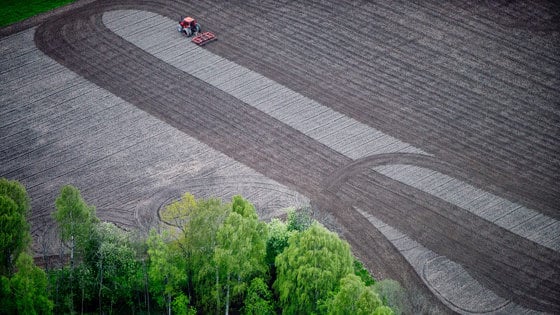Soil conservation
Article | Last updated: 03/12/2014 | Ministry of Agriculture and Food
Soil conservation aims to safeguard that it is possible for the population, now and in the future, to grow their own food on their own soil.

Compared to many other countries, Norway has limited areas of arable land. Safeguarding food production requires strong soil protection measures, combined with better utilization of available farmland.
Farmland is a scarce resource. Only three per cent of Norway's land area is currently being cultivated - including croplands and cultivated pastures - or about 10 million acres (1 acre = 1000 square meters).
Of this, only 30 percent is suitable for growing food grains. No EU country has a lower proportion. Today, 90 percent of agricultural land is used to grow animal feed for livestock, which provides meat, milk or eggs.
The total agricultural area in Norway has increased during the last 25 years, but the best land - suitable to grow grains, potatoes and vegetables - has been reduced. This is due to increased use of cultivated pasture, whereas farmlands many places has been reallocated or allowed to lie fallow.
Clearing new land
Norway has a limited reserve of areas for growing food grains. There are 12.5 million hectares of unused arable land, but these are mostly located in climate zones that are only suitable for growing grass and grain for animal feed.
Less than two percent of the unused land is located in areas suited to the cultivation of food grains. This is equivalent to not even half the area of Oslo.
About 35 percent of the remaining arable land is marsh. In many cases, bringing this land into cultivation the only way for the individual landowner to expand the production area, but this will increase the output of greenhouse gases. Also, the marshes are important for biodiversity.
Major challenges
It takes centuries to form good topsoil. Soil is thus effectively a non-renewable resource.
The importance of strong soil conservation policies has been a national issue since the early 1970s.
At the same time, population increase and the general progress of society has created a large demand for available land - particularly in near-urban regions, where the best topsoil is.
In reality, soil conservation must constantly be balanced against the need for housing and industrial development, new railway routes and roads. At times, the conflict level is very high, and the pressure on land resources is greater today than ever.
Improved planning and legislation
The many municipalities of Norway play an important role in safeguarding national and regional soil conservation requirements, as they bear the chief responsibility for land management at the local level.
Today, the Land Act and the Planning and Building Act regulate the municipal management of agricultural land.
The revised Planning and Building Act, in force since July 1. 2009, provides an increased number of measures for improving soil conservation. In recent years, soil conservation has been featuring more prominently in the planning of new transport infrastructure projects, as well as housing and industry developments.
To better the balancing of Norway's diverse space requirements, the Ministry of Agriculture and Food is presently completing a new, comprehensive soil protection strategy.